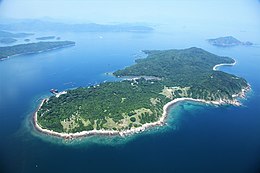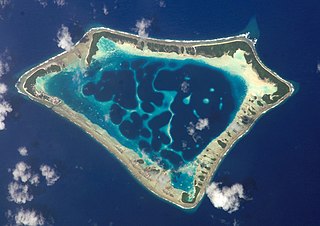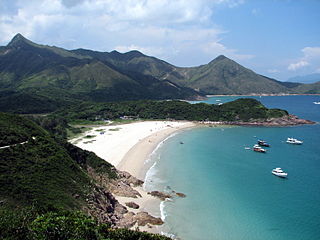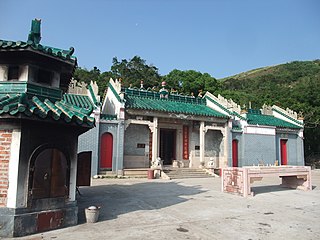This article needs additional citations for verification .(April 2007) (Learn how and when to remove this template message) |
| 塔門 | |
|---|---|
 | |
Map showing the location of Grass Island within Hong Kong | |
| Geography | |
| Location | Tai Po District |
| Coordinates | 22°28′35″N114°21′45″E / 22.47639°N 114.36250°E Coordinates: 22°28′35″N114°21′45″E / 22.47639°N 114.36250°E |
| Area | 1.69 km2 (0.65 sq mi) |
| Administration | |
| Demographics | |
| Population | 100 (approx) |
| Grass Island, Hong Kong | |||||||||
| Traditional Chinese | 塔門 | ||||||||
|---|---|---|---|---|---|---|---|---|---|
| |||||||||


Grass Island (Chinese :塔門) or Tap Mun is an island in Hong Kong, located in the northeastern part of the territory. Its area is 1.69 km². [1] Administratively, it is part of the Tai Po District. There are about 100 people living on the island, and feral cattles are known on the island. [2]

Traditional Chinese characters are Chinese characters in any character set that does not contain newly created characters or character substitutions performed after 1946. They are most commonly the characters in the standardized character sets of Taiwan, of Hong Kong and Macau, and in the Kangxi Dictionary. The modern shapes of traditional Chinese characters first appeared with the emergence of the clerical script during the Han Dynasty, and have been more or less stable since the 5th century.

An island or isle is any piece of sub-continental land that is surrounded by water. Very small islands such as emergent land features on atolls can be called islets, skerries, cays or keys. An island in a river or a lake island may be called an eyot or ait, and a small island off the coast may be called a holm. A grouping of geographically or geologically related islands is called an archipelago, such as the Philippines.

Hong Kong, officially the Hong Kong Special Administrative Region of the People's Republic of China and commonly abbreviated as HK, is a special administrative region on the eastern side of the Pearl River estuary in southern China. With over 7.4 million people of various nationalities in a 1,104-square-kilometre (426 sq mi) territory, Hong Kong is the world's fourth most densely populated region.



















